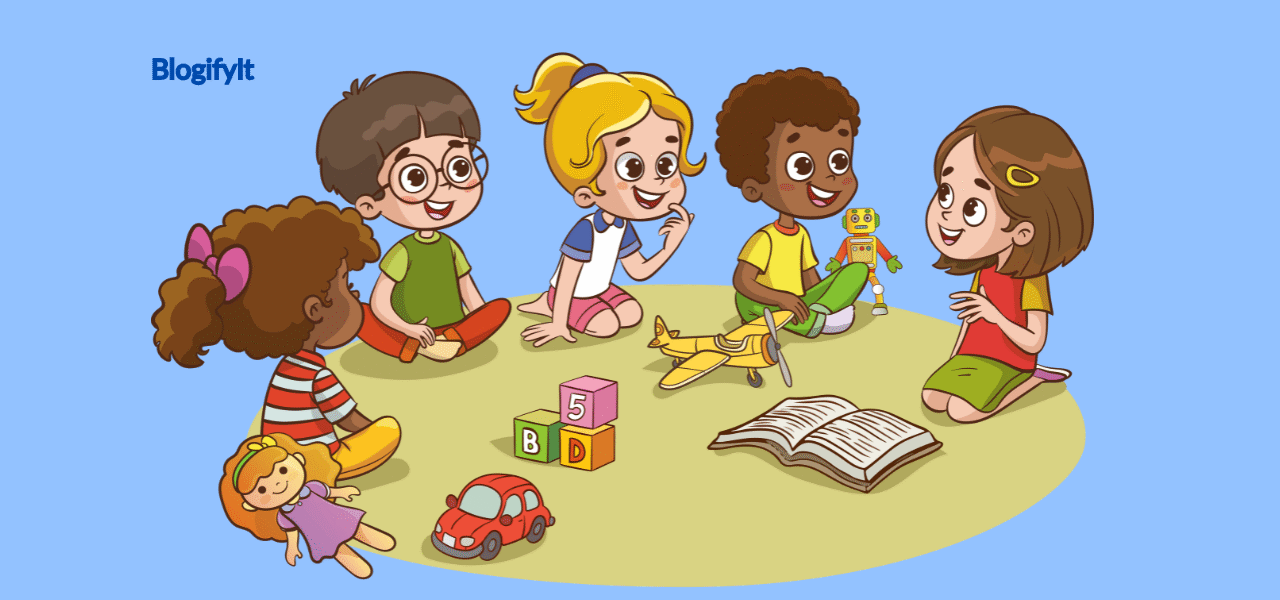Free Educational Activities For 2 Year Olds at Home
Keeping a two-year-old engaged can be a joyful — and sometimes challenging — experience! Luckily, there are countless free educational activities for 2 year olds at home that combine fun with important learning milestones.
You don’t need fancy toys or expensive classes; just a little creativity and everyday household items can spark big developmental gains. I am sure you are curious to know more. So, Here’s a roundup of the best ideas to get you started.
Why Choose Free Educational Activities for 2 Year Olds at Home?
At this tender age, toddlers learn best through play. By choosing free educational activities for 2 year olds at home, you can:
- Foster early language, math, and motor skills.
- Encourage curiosity and exploration.
- Build a stronger parent-child bond through shared experiences.
Most importantly, these activities fit seamlessly into your daily routine — making learning feel like pure
10+ Fun Free Educational Activities for 2 Year Olds at Home
Here are some educational activities for 2 year olds at home that you must try today:
1. Color Sorting Game
How to Do It:
Use colored paper, plastic cups, or bowls — whatever is brightly colored. Get your hands on some small objects, such as buttons, small blocks, or pom-poms. Your toddler will enjoy sorting these objects by color. A color-matching activity could include asking them to drop each object into the container that matches color.
Benefit:
This activity enhances your child’s ability to see colors and sort them into categories. This easy game allows early exposure to the learning, and that level of hand-eye coordination takes some skills to pick the objects and place them in the correct slots.
2. Sing Songs and Nursery Rhymes
How to Do It:
Sing together with your toddler some nursery rhymes your toddler chooses, e.g., “Twinkle, Twinkle, Little Star,” “The Wheels on the Bus,” or “If You’re Happy and You Know It.” Do some accompanying hand movements: clap your hands, wiggle your fingers, or tap your toes. You may even want to use some props, such as a scarf or toy, to make it more interactive.
Benefit:
Great support for developing language, memory, and listening: the rhythm reinforces sentence structure and vocabulary while the repetition reinforces action words and feelings.
3. DIY Sensory Bins
How to Do It:
Fill a large plastic bin with sensory materials: dried rice, pasta, water, or sand (a baking sheet is an excellent alternative for quick cleanup). Hide some objects or toys that increase sensory exploration, such as measuring cups, spoons, or little cars. You can change the theme every week to keep it exciting!
Benefit:
Sensory bins encourage children to explore different textures and develop tactile awareness. They also build fine motor skills as they scoop, pour, and manipulate objects. Baby sensory play is vital for brain development by aiding problem-solving and creative thinking.
4. Shape Hunt
How to Do It:
Prepare large shapes (circle, square, triangle, etc.) from colorful paper to hide them throughout the room. Call out a shape for the child to find. Add excitement by creating a mini scavenger hunt or by providing clues to the object’s whereabouts.
Benefit:
This will teach them the basic shapes as well as improve their problem-solving and memory skills. Shape searching around the house makes them conscious of their surroundings and linking the abstract concept of a shape to the real-life objects they see.
5. Story Time
How to Do It:
Every day, choose a few quiet minutes for storytime. Choose some picture books (or a few stories of your own) and read them aloud to your child. Encourage them to point at pictures, name familiar objects, or predict things that might happen next in the story.
Benefit:
Reading builds language skills, enhances memory, and introduces early literacy concepts. By talking about the story, you’re expanding your child’s vocabulary and teaching them to follow along with the flow of the narrative. Plus, this creates a lovely bonding experience between the two of you.
6. Building Towers
How to Do It:
Have you ever noticed how much enjoyment toddlers get from stacking things? It’s such a simple yet enjoyable activity! Blocks, plastic cups, or empty boxes from the house will do. Sit together and build the tallest tower you can. Let your little one have the thrill of knocking it down; they’ll giggle hysterically!
Benefit:
Putting towers together teaches the child about balance and perspectives: cause and effect. They notice when they stack, the tower form grows taller, and when they put their hand on it, it falls! I mean, sneaking a bit of science in there while they don’t even know!
7. Animal Sounds Game
How to Do It:
Let’s be silly! Pick an animal and ask your toddler, “What does a cow say?” If he’s not sure, you can go “moo” like a cow. Ask him to hop like a bunny or roar like a lion. Toddlers love to imitate you, so go crazy and be loud and fun.
Benefit:
Making animal sounds sharpens the little ones’ listening skills and helps them practice their speech; teaches them about animals and helps them build memory; and it is hilarious to hear their tiny voices trying to make big sounds!
8. Dance party
How to Do It:
Put on the music and dance like no one is watching! Toddlers do not mind if you are dancing with the wrong moves. They just like the fact that you are moving. Imitate their silly moves, or come up with your own!
Benefit:
Dancing is good for building muscle strength. It teaches rhythm. It is one of the best ways to dispel energy and be ecstatic. Who doesn’t enjoy a living-room dance party?
9. Simple Puzzles
How to Do It:
If you have puzzles with large pieces, that’s perfect. No puzzles? Not a problem: cut a magazine picture into big pieces. Sit down with your toddler and figure it out together.
Benefit:
Puzzles help your child learn to think about problem-solving. Also teach patience and using eyes and hands together. Each time a piece fits, confidence builds also!
10. Nature Walk and Talk
How to Do It:
You don’t have to go too far; a walk down the street or a few minutes in the backyard can be quite an adventure! You can point out birds, flowers, cars, and clouds. Then, ask simple questions like, “What color is that flower?” or “Can you find something in yellow?”
Benefit:
Walking and talking will help strengthen your toddler’s language and learn about the world around them. Fresh air is good for everybody, including grown-ups!
11. Pretend Play
How to Do It:
Encourage your toddler to travel into an imaginative world with pretend play! You can pretend to be both chefs preparing imaginary food, doctors caring for stuffed animals, or superheroes saving the day. For example, a spoon can transform into a magic wand and a blanket into a superhero cape. Most importantly, let him or her be the boss in establishing the scenes and flow of events.
Benefit:
Pretend activity is significant for the child’s growth. It sparks imagination and gives them an understanding of the world, while enabling emotional expression. Pretend play also supports empathy, because they learn to consider what it might feel like to be another person.
12. Water Play
How to Do It:
Fill a baby tub or basin with water and then join it into cups, spoons, or a few waterproof toys. Just let the 2-year-old do all the throwing, pouring, and exploring. If you want to push the fun factor up the scale, add a couple of drops of food coloring or a squirt of bubble bath!
Benefit:
Absolutely wonderful sensory play, soothing, calming-Basically, this is what water play is all about. Through pouring, floating, and sinking, toddlers will learn all about cause and effect and develop those fine motor skills in a Parent-Friendly way after a typical day.
13. Crayon Scribble Time
How to Do It:
Give your child a bunch of crayons along with a good piece of paper, and let him go crazy and mess it up with scribbling rules. Just fun! You may gently guide them by saying, “Can you draw with the blue crayon?” or “What happens when you mix two colors together?”
Benefit:
Scribbling is one of the messiest forms of play-but a very important activity in the development of your child. Scribbling strengthens those tiny hand muscles and prepares them for the eventual task of holding a pencil. Besides, the child can have an outlet for creativity and self-expression. Each colorful scribble is a step further into becoming a little artist!
14. Nature Treasure Hunt
How to Do It:
On this nature walk, take a turn: Just around the house, a park, or even a walk down the street. Give a few things to look for: objects like a leaf, a small rock, a flower, or something red would suffice. You may also put all the “stuff” into a tiny basket or bag and discuss them later at home.
Benefit:
Nature hunts stimulate curiosity and generate awareness of the surroundings. It teaches observation, imparts new vocabulary, and discusses colors, shapes, and textures. Also, being outdoors improves their moods and helps them expend that energy in a good fashion.
Final Thoughts
These free educational activities for 2 year olds at home are not just fun — they’re powerful learning tools that help your toddler develop in so many ways. Whether you’re singing, building towers, or taking a walk in the park, you’re giving your child the gift of learning through play. Keep nurturing that curiosity, and enjoy the special moments together as you explore and grow!
If you like this blog, please keep coming back to our site as we continue to share more parenting tips, activity ideas, and expert-backed advice to help you navigate the toddler years with confidence and joy.




